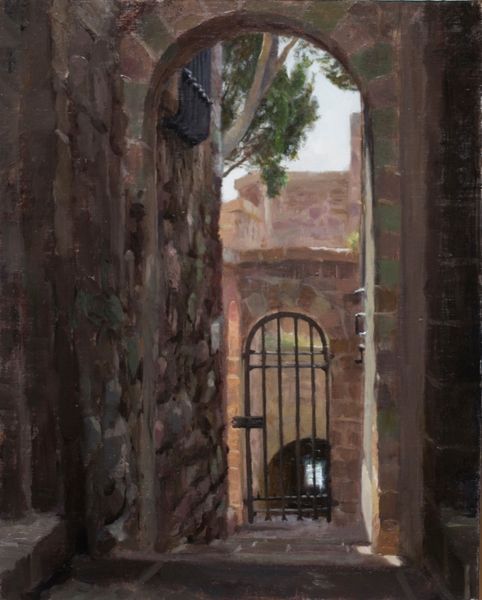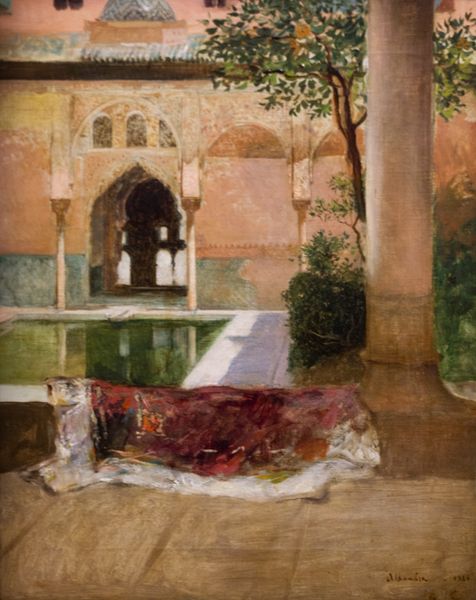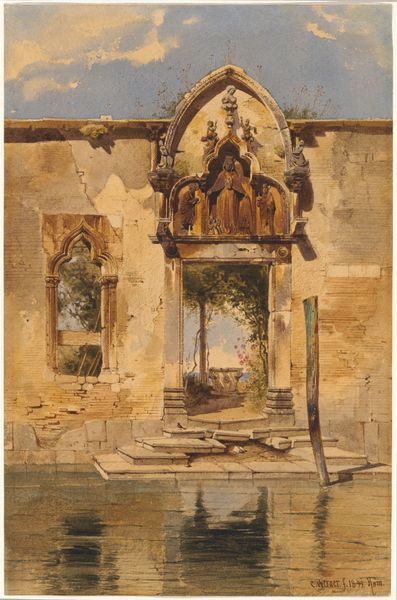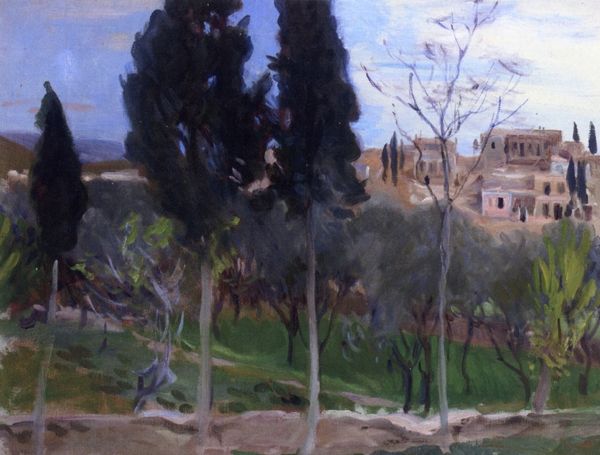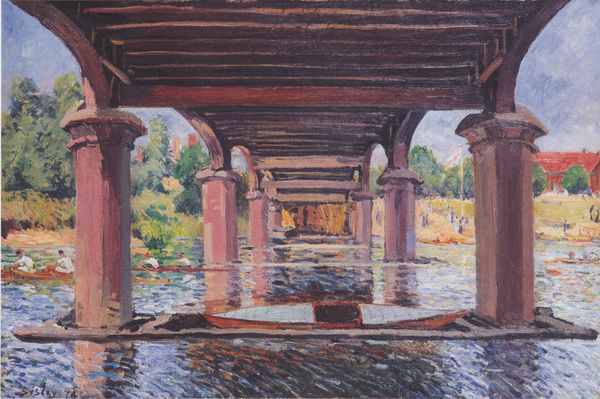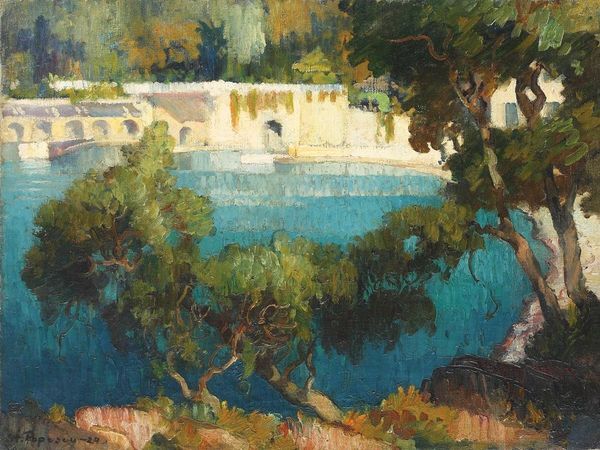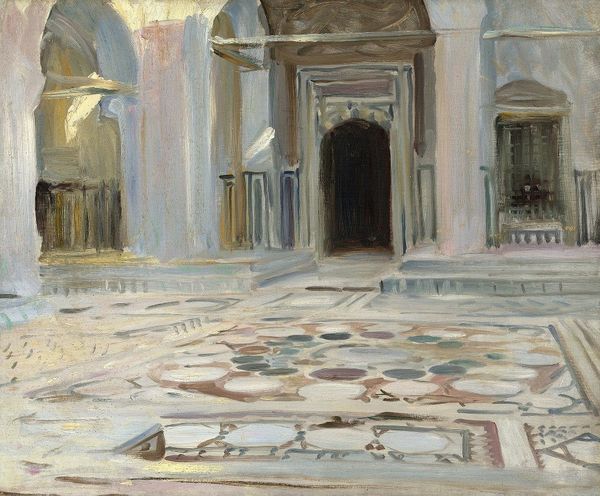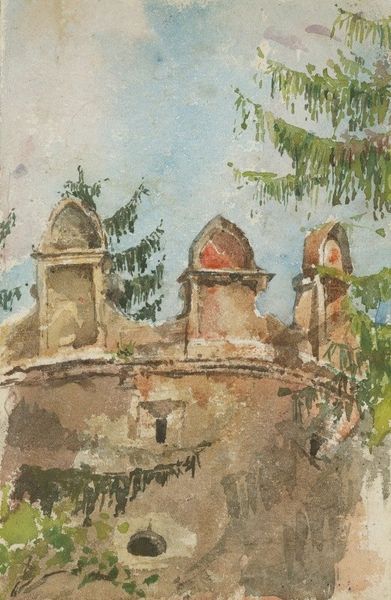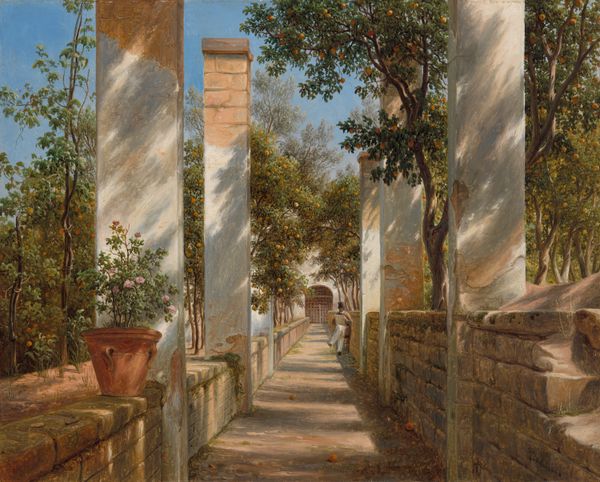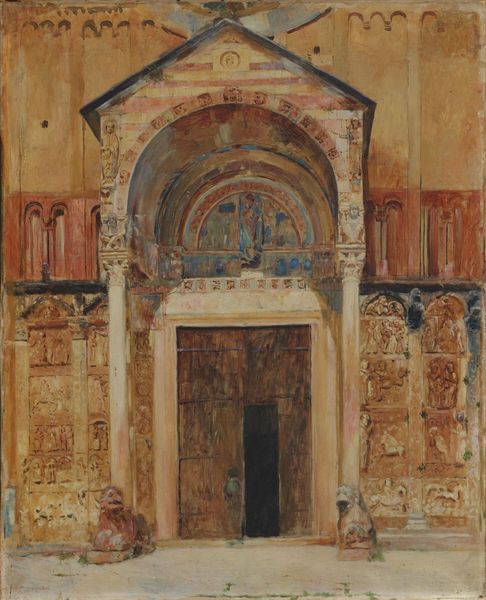
painting, oil-paint
#
urban landscape
#
abstract painting
#
painting
#
oil-paint
#
asian-art
#
landscape
#
perspective
#
oil painting
#
arch
#
cityscape
#
islamic-art
#
genre-painting
#
realism
Dimensions: 55.3 x 43.7 cm
Copyright: Public domain
Curator: This painting, titled "Steps in Sunlight (India)," is by Edwin Lord Weeks, although its exact creation date remains unknown. What's your immediate reaction to it? Editor: My first impression is one of quiet observation. It feels very still, despite the sunlight suggested in the title. The architecture looms large. Curator: Let’s think about the materials: oil paint, likely applied with a loaded brush given the textures we observe. Consider the support, presumably canvas or perhaps a prepared panel. What stories do the materials tell? Editor: To me, the steps are highly evocative. Steps often symbolize transition, and the archways offer potential passages. It calls to mind something about sacred spaces and initiations. The lone bird adds to that symbolism, like a watchful spirit. Curator: Indeed. I notice the architectural details themselves: the domes and arches so characteristic of Islamic and Indian artistic traditions, the geometry that lends a certain rhythm. One is made to contemplate the craftsmanship in brick and stone. Editor: Yes, and those architectural forms certainly connect to a larger cultural and spiritual narrative. It also evokes an imagined orientalism; the arched structures feel iconic and somewhat exotic. The artist almost fetishizes the space. Curator: You mentioned transition and sacred space, and I see it in the wear of the stone, the visible erosion. The painting emphasizes the interaction of human-made forms with the effects of weather and time; you perceive the constant cycles of creation and decay. Editor: The perspective, drawing the eye upward along those steps, amplifies that sense of pilgrimage or ascent, perhaps even spiritual elevation through architecture. What story do you think Weeks was trying to communicate about India? Curator: Weeks, in his time, benefited from specific circuits of patronage and access that permitted such travel and documentation, resulting in paintings that were, in turn, traded, viewed, and ultimately consumed back in the West. What labor, exploitation, or material exchange may lay beneath this exotic view? Editor: It's fascinating how we arrive at different interpretations. You investigate the materials and circumstances of its production, while I consider the power of its iconography and how that influences cultural memory. Curator: Precisely. These material traces connect to grand sociopolitical contexts. They inform our understanding just as effectively as any symbol. Editor: Both the symbols and the circumstances around the art impact the modern viewer.
Comments
No comments
Be the first to comment and join the conversation on the ultimate creative platform.

